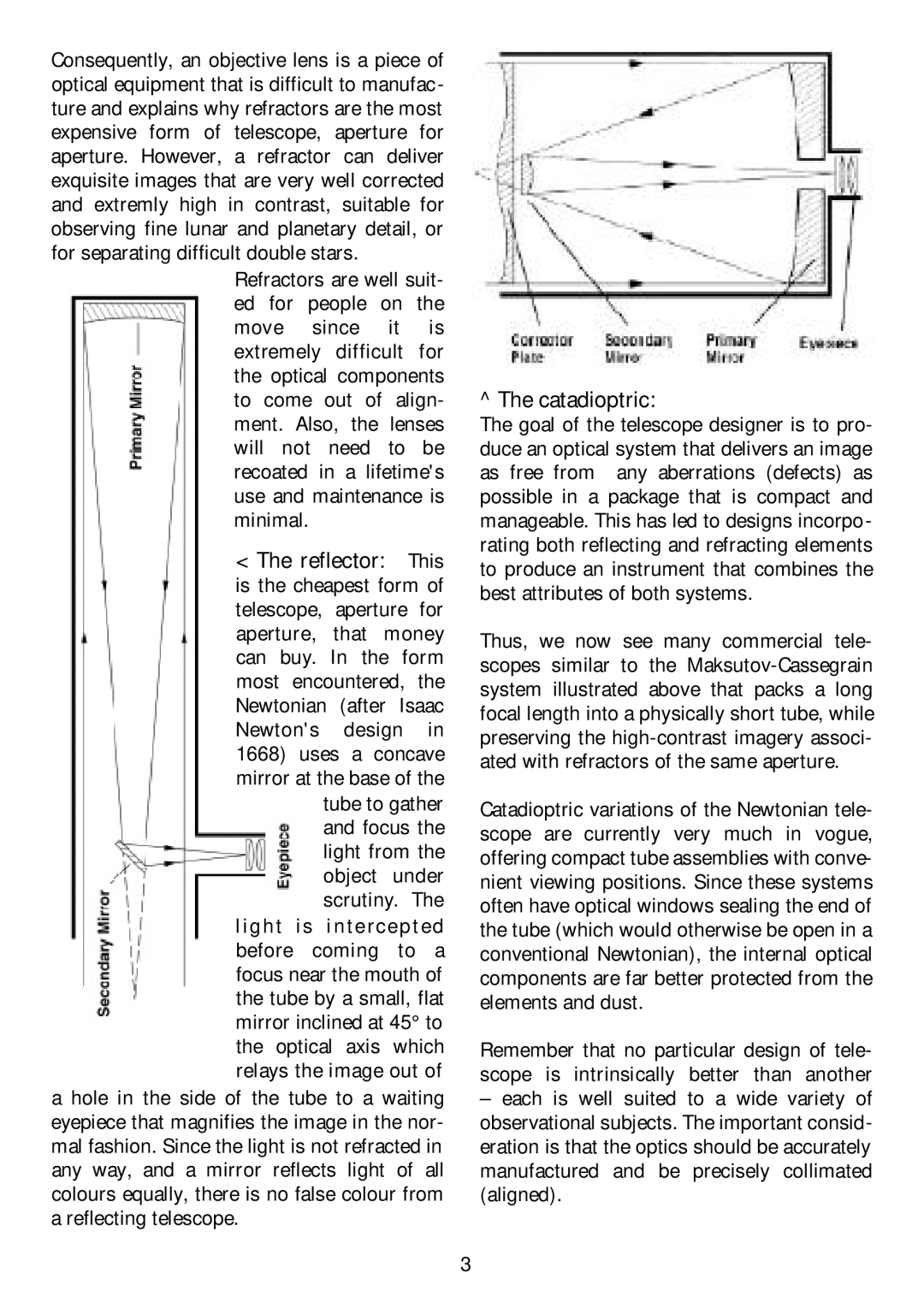
Consequently, an objective lens is a piece of optical equipment that is difficult to manufac- ture and explains why refractors are the most expensive form of telescope, aperture for aperture. However, a refractor can deliver exquisite images that are very well corrected and extremly high in contrast, suitable for observing fine lunar and planetary detail, or for separating difficult double stars.
Refractors are well suit- ed for people on the move since it is extremely difficult for the optical components to come out of align- ment. Also, the lenses will not need to be recoated in a lifetime's use and maintenance is minimal.
<The reflector: This is the cheapest form of telescope, aperture for aperture, that money can buy. In the form most encountered, the Newtonian (after Isaac Newton's design in 1668) uses a concave mirror at the base of the
tube to gather and focus the light from the object under scrutiny. The
light is i nte rc e p t e d before coming to a focus near the mouth of the tube by a small, flat mirror inclined at 45° to the optical axis which relays the image out of
a hole in the side of the tube to a waiting eyepiece that magnifies the image in the nor- mal fashion. Since the light is not refracted in any way, and a mirror reflects light of all colours equally, there is no false colour from a reflecting telescope.
^ The catadioptric:
The goal of the telescope designer is to pro- duce an optical system that delivers an image as free from any aberrations (defects) as possible in a package that is compact and manageable. This has led to designs incorpo- rating both reflecting and refracting elements to produce an instrument that combines the best attributes of both systems.
Thus, we now see many commercial tele- scopes similar to the
Catadioptric variations of the Newtonian tele- scope are currently very much in vogue, offering compact tube assemblies with conve- nient viewing positions. Since these systems often have optical windows sealing the end of the tube (which would otherwise be open in a conventional Newtonian), the internal optical components are far better protected from the elements and dust.
Remember that no particular design of tele- scope is intrinsically better than another
–each is well suited to a wide variety of observational subjects. The important consid- eration is that the optics should be accurately manufactured and be precisely collimated (aligned).
3
